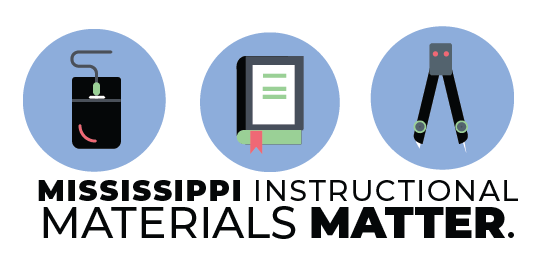High standards, aligned assessments, and transparent accountability are foundational to a high-performing public school system. Mississippi First has been a leading voice for adopting and supporting the implementation of Mississippi’s new framework for education. We believe the state’s NAEP progress over the last twenty years is best attributed to a long progression of increasing rigor and alignment in our standards, tests, and accountability system. We are now working to extend our impact by promoting the instructional resources teachers need to help students be successful within the new framework.
In 2014, Mississippi First lead a campaign, #ChooseExcellence, to ensure that Mississippi’s educational standards remained rigorous and nationally competitive. We are extremely proud that this campaign was successful as reflected in the Mississippi College and Career Ready Standards. Over time, we will continue to monitor standards development through the normal process of review and revision.
Mississippi College and Career Ready Standards
- Are grade-specific learning benchmarks in math and literacy that build on each other, step-by-step, grade level to grade level.
- Connect curriculum to skills needed in the modern workplace, such as problem-solving, collaboration, communication, and creativity.
- Create the same expectations for every student, which allows parents to understand exactly where their student stands at every grade level.
- Are college- and career-ready standards, meaning they prepare every student for what lies beyond graduation.
Here in Mississippi, the debate over testing has grown hotter over the past years as well with more and more local voices decrying testing. As an organization full of former teachers, Mississippi First understands the important role that testing plays in instruction. Teachers use assessments to determine how well students have learned material, what they still struggle with, and which students might need additional support to master concepts. Parents and students can use assessment results to determine how much progress they are making and what students might need to focus on. Statewide assessments are necessary to inform the public of the quality of our education system and to evaluate the effectiveness of various programs and reforms. The challenge for schools and policymakers is to find the sweet spot of enough testing to accomplish worthwhile educational aims without detracting from the overall learning experience of students. But how much time do Mississippi students really spend taking tests? And how much time is the right amount?
We worked to answer those questions through a research project. In 2018, we released Understanding District and State Testing in Mississippi. This report uses field research on testing practices in four diverse Mississippi school districts to determine how many tests Mississippi students take and how much time they spend taking those tests. This was our most publicized report ever. It led to the creation of the Mississippi Department of Education’s Testing Taskforce. Read the full report.
Since the 2013-2014 school year, Mississippi schools and districts have been annually rated using an A-F accountability system, just like children receive a grade A, B, C, D, or F on their report cards. This grade is based on several components, including
- Proficiency (the percent of students who meet or exceed grade-level standards in English and math in grades 3-8 and in English, math, science, and social studies in high school);
- Growth of All Students (the percent of students who grow at least one level in English or math or who maintain a proficient or advanced level);
- Growth of the Lowest 25% (the percent of the lowest 25% of students who grow at least one level in English or math);
- English Language Progress [AS APPLICABLE] (the percent of English language learners who make progress towards proficiency);
- College Readiness [HIGH SCHOOLS ONLY] (the percent of students who meet college readiness benchmarks on the ACT in English and math);
- Acceleration [HIGH SCHOOLS ONLY] (the percent of students taking and passing college-level courses or career certifications); and
- Graduation [HIGH SCHOOLS ONLY] (the percent of students who graduate in four years).
Schools and districts earn points on each of these components. These points are totaled and then compared to a scale to determine the school or district’s grade. The number that a school or district must reach to receive a higher grade—599 points for a district to receive a “B,” for example—is often referred to as the cut score.
Each year when grades are released, we educate the public on how the accountability system works. See our blog for previous posts on this topic.
High standards serve as a goal line for what students should know and be able to do at the end of every grade. As past teachers, we know that teachers need the instructional tools and resources that will help students reach these goals. This fall, we completed a teacher listening tour to better understand what curriculum support teachers receive to teach the standards, and we found that teachers are eager to find better materials that are proven to work. We are currently working with the Mississippi Department of Education to raise awareness about newly approved curriculum options in English and math that will fill this need. This project includes launching a new site to provide resources to teachers in finding these materials and advocating for their use in their school districts.

In 2020, we, in partnership with the Mississippi Department of Education (MDE), launched a new website for Mississippi teachers to increase teacher access to high-quality instructional materials.
Visit Mississippi Instructional Materials Matter at msinstructionalmaterials.org.

